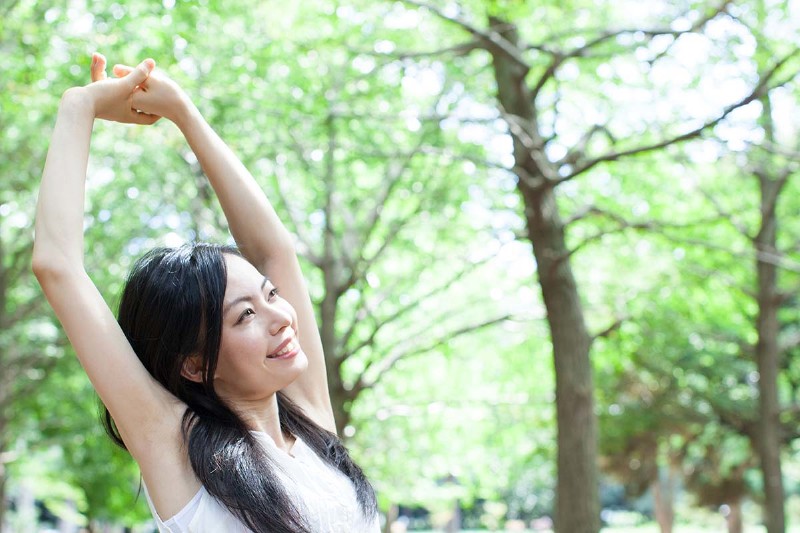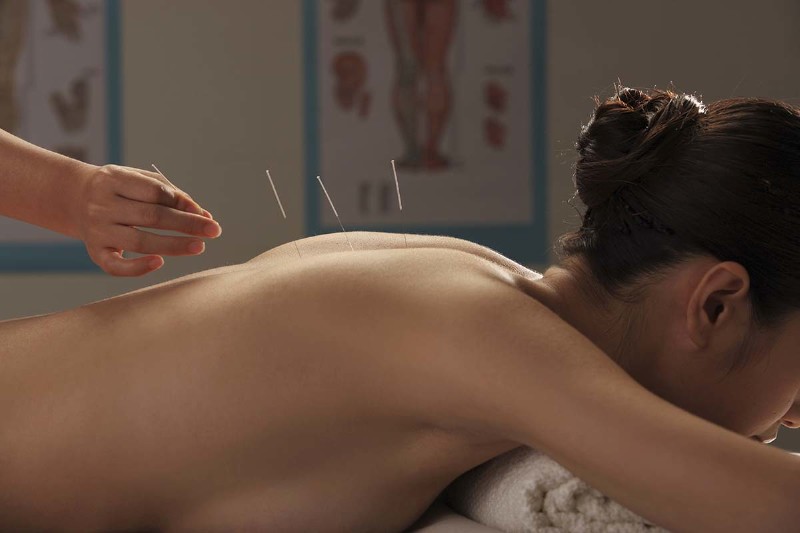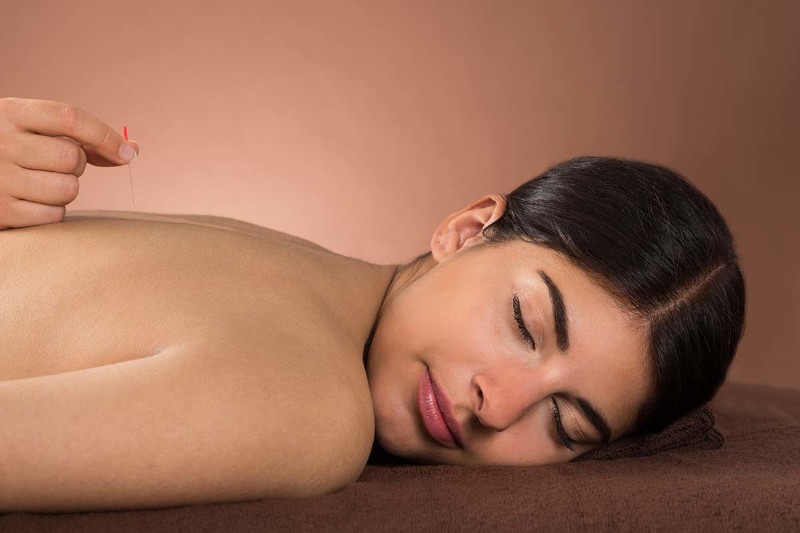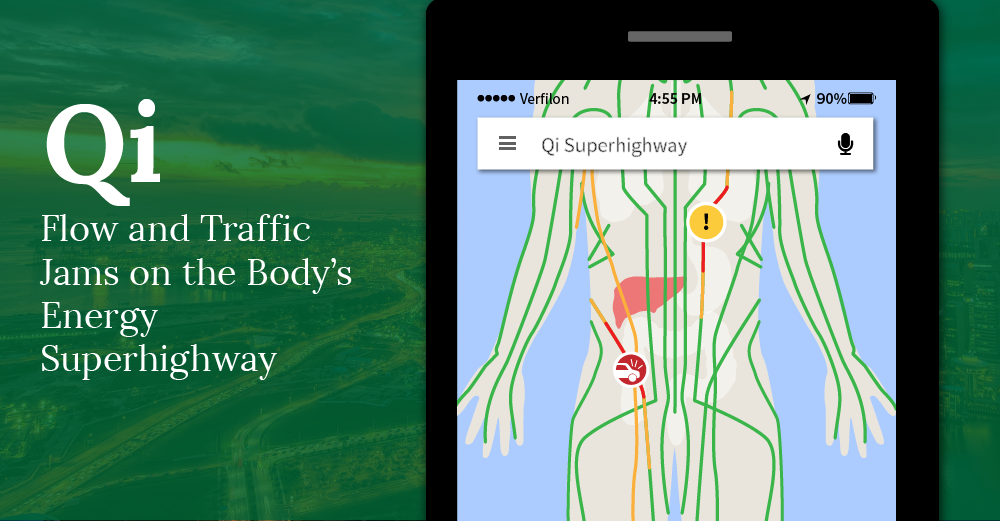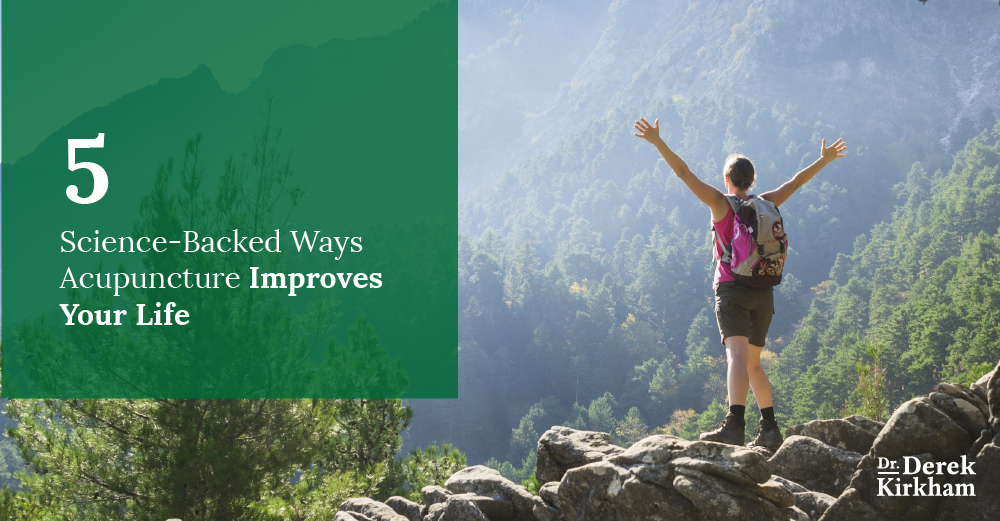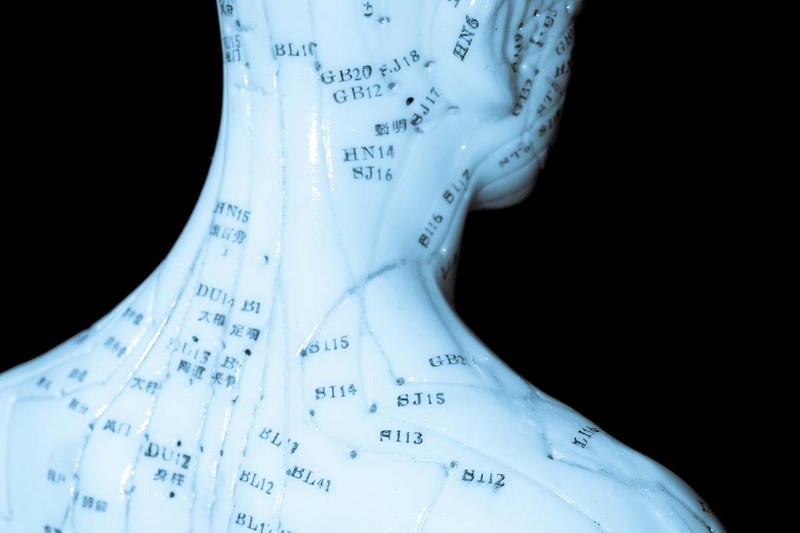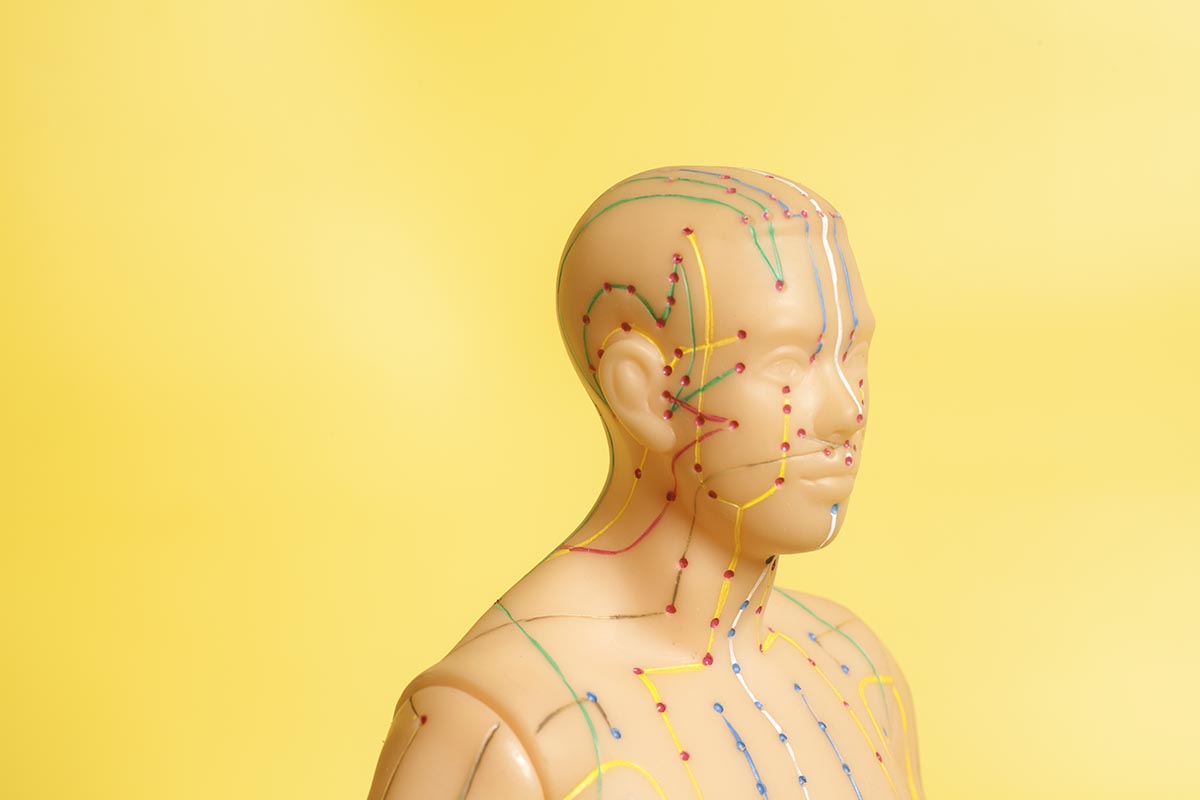Acupuncture Learning Center
What is Acupuncture and How Does it Work?
Many people approach acupuncture when they are at the end of their rope with Western medicine, and are looking for a new, more natural approach to health and well-being without the side effects of drugs.
You may be one of them.
Many just throw in the towel and decide to deal with the pain or health issue. While this may seem like your only option, stop for a minute to consider acupuncture.
Acupuncture, a form of Traditional Chinese Medicine (TCM), is a lot more than needles. Acupuncturists offer entirely needle-free treatment options as well. They treat holistically with herbs, bodywork therapies, and more.
But the core practice is the use of unbelievably thin and painless needles to treat all forms of bodily imbalances, to relieve pain, and even to treat the mind, such as for anxiety and sleep issues.
We’ll dive into this ancient and modern practice that has been practiced for centuries and that also brings in modern science and approaches.
So let’s get started:

What is Acupuncture?
Acupuncture is an alternative medical practice that typically entails using very thin needles to stimulate certain points on the body. This helps to alleviate pain, as well as treat various health conditions, restoring balance to the body and healthy functioning to all the organs and systems within you.
Numerous studies have found that acupuncture is effective in treating ailments such as pain and nausea. These studies, many of which are included in the meta-analysis published in the Archives of Internal Medicine, have involved almost 18,000 patients and have found that acupuncture is an effective method for treating chronic pain. Due to these studies, most doctors will readily refer patients to acupuncture as a reasonable treatment option, which is often covered by health insurance.
Acupuncture is one of the main parts of Traditional Chinese Medicine. Chinese acupuncture is not based on scientific knowledge, which creates a shadow of a doubt regarding effectiveness for some, but those who practice it find great relief.
There are many acupuncture theories that are based on different techniques and philosophies. And how widespread the practice, or how popular the utilization of some theories, depends on the country. In the US, the most commonly used method is the Traditional Chinese method.
How does acupuncture work?
According to UC San Diego Center for Integrative Medicine, acupuncture works by improving the body’s natural functions and promoting a process of self-healing. This is done by stimulating acupuncture points, which are otherwise known as acupoints.
While the most common method of doing this is with the use of a thin needle, there are some other techniques for acupoint stimulation, such as:
- Manual massage
- Cupping
- Heat therapy
- Application of topical herbs
- Application of liniments
In Traditional Chinese Medicine, acupuncture is believed to work by balancing the two energies in the body, the yin and the yang. When these are balanced, the body is healthy. However, the flow of energy (the qi) can become blocked, which leads to health conditions such as pain or illness. Acupuncture is used to release the blockage and stimulate the body’s natural healing response.
The Qi
The qi is the common thread among various types of Traditional Chinese Medicine. It refers to the energy in the body. The qi embraces all of the body’s energy, from physical energy, to mental energy that comes with thoughts and emotions.
Traditional Chinese Medicine practitioners believe that a person is happy and healthy when their qi is dynamic, harmonious, and balanced.
Qi is thought to flow throughout the body in a similar manner to how water flows through rivers. The rivers in the body are referred to as meridians, or the meridian channels. Certain areas of the body are known to collect qi, which results in an acupuncture point. This is where a Chinese acupuncturist accesses and manipulates qi in order to restore balance.
What is the history of acupuncture?
According to Oxford Academic, acupuncture has been a type of practiced therapy since ancient times. In China, sharpened stones that date back to 6000 BC are assumed to be instruments that were used for acupuncture treatment. Documents that were discovered in China within a tomb that was sealed in 198 BC refer to a system of meridians, which is what traditional acupuncture is based upon.
The first document that definitively described using acupuncture as a treatment is “The Yellow Emperor’s Classic of Internal Medicine”, which dates from around 100 BC. The text is thought to be a collection of traditions that were handed down over centuries. The concept of meridians, where energy flows through the body, was established by this time, however, the exact anatomical points for acupuncture developed later.
Acupuncture gradually became a standard therapy used in China, along with heat, herbs, and massage. Chinese statues that date back to the fifteenth century reveal the acupuncture points that are used in modern day. The first series of books on acupuncture, called The Great Compendium of Acupuncture and Moxibustion, were published during the Ming Dynasty, which was from 1368–1644. They clearly describe the full set of all 365 acupoints where needles can be inserted to change the flow of energy.
Interest in acupuncture began to decline in China in the seventeenth century because people started to think of it as superstitious. However, the skill was still retained as an interest among academics and healers. By 1929, acupuncture in China was outlawed, due to the increasing acceptance of Western medicine. However, it was later reinstated, possibly because it was the only reasonable way to provide even basic health care to the growing population.
During the 1950s, acupuncture research institutes were built throughout China and treatment departments were made available within Western-style hospitals. During this same time, more research was done on acupuncture to study its scientific explanation.
Acupuncture spread to other countries at various times throughout the centuries. The first medical description was created by a European doctor around 1680. In the beginning of the nineteenth century, interest began to flourish in both America and England.
Acupuncture reached its current level of acceptability in America when a consensus done by the National Institutes of Health reported that there was positive scientific evidence for the effectiveness of acupuncture in certain conditions.
Modern research has shown acupuncture to be effective for ailments such as:
- Nervous system disorders
- Endocrine and immune system disorders
- Heart problems
- Pain
- Poor sleep
- Digestive function
- Overall sense of well-being
What should you expect from an acupuncture treatment?
According to the British Acupuncture Council, there are a few things to keep in mind prior to your first acupuncture appointment.
- Wear clothing that allows for easy access of the lower arms and legs.
- Do not arrive with either a noticeably full or empty stomach.
- Make sure your practitioner knows this is your first time receiving an acupuncture treatment.
During your first consultation, your acupuncturist will get a thorough understanding of your primary health concern as well as your overall health and lifestyle. This will involve a verbal conversation about your symptoms, your medical history, your sleeping patterns, your emotional well-being, and your appetite and digestion. Women will be asked about past pregnancies and their menstrual cycle as well.
While some questions may seem unrelated to your primary health concern, the information you provide will help your practitioner form a picture of your overall health. Your practitioner will also find your pulse, and may look at your tongue, and may examine you to detect any areas of muscle stress. With this assessment, the acupuncturist can recommend a personalized treatment plan to address your health concerns. This plan may include dietary and lifestyle changes in addition to the acupuncture treatment.
To start an acupuncture treatment, you will be asked to lie comfortably on a treatment table. The acupuncturist will then stimulate precise acupuncture points on various parts of your body. While the idea of sticking needles in your skin throughout your body may sound uncomfortable, most people feel very little, if any, discomfort during this process. The needles are typically kept in the skin for anywhere from five to 30 minutes. During the treatment, and certainly afterward, people say they feel very relaxed.
Learn more about what to expect in our articles where we go deeper:
What does science say about the effectiveness of acupuncture?
According to the National Institutes of Health, results from studies show that acupuncture can help relieve common and chronic pain such as:
- Tension headaches
- Migraine headaches
- Lower back pain
- Neck pain
- Knee pain
Headaches
- In 2012, an analysis was done on the data of individual acupuncture participants, reviewing their migraine and tension headaches. The results showed that true acupuncture was more effective in relieving pain than either a placebo or no acupuncture.
- A systematic review of studies done in 2009 proved that true acupuncture, compared to simulated acupuncture or pain relievers, helped decrease the pain of a tension headache.
- A systematic review of studies done in 2008 showed that true acupuncture has a slight advantage over a placebo in reducing the intensity and frequency of tension headaches.
- A 2009 systematic review of people who suffer from migraines uncovered that using acupuncture as an additional treatment along with basic care helps reduce migraine frequency.
Lower Back Pain
- An analysis of data completed in 2012 on acupuncture participants studies for back and neck pain together concluded that real acupuncture was more effective in treating the pain than either no acupuncture or a placebo.
- A review done by the Agency for Healthcare Research and Quality in 2010 concluded acupuncture is able to relieve lower back pain immediately following treatment.
- A systematic review done in 2008 on acupuncture studies for lower back pain found conclusive evidence that using acupuncture along with typical medical care helps to relieve pain more than using typical care by itself.
- In 2007, the clinical practice guidelines that were issued by both the American Pain Society as well as the American College of Physicians recommended acupuncture as an effective non-drug approach that doctors should consider recommending for patients with lower back pain when they do not respond to self-care.
Neck Pain
- A 2009 analysis of studies found that real acupuncture was more effective in relieving neck pain than a placebo.
- A large study conducted in Germany with over 14,000 participants with neck pain found that the participants who received acupuncture reported more pain relief than those who did not.
Knee Pain
- A 2014 clinical study done in Australia that was performed on 282 participants over a course of 12 weeks showed that acupuncture was more effective at relieving knee pain due to osteoarthritis than no acupuncture.
- A 2012 analysis of data on acupuncture participants found that real acupuncture was more effective in the treatment of osteoarthritis pain than a placebo or no acupuncture.
- A 2010 review of studies of acupuncture performed for knee or hip osteoarthritis revealed that true acupuncture was more effective in treating osteoarthritis pain than either a placebo or no acupuncture.
What does the National Institutes of Health say about the safety of acupuncture?
The National Institutes of Health reports that very few complications have been reported from using acupuncture. However, there have been complications from the use of nonsterile needles during acupuncture and improper delivery of acupuncture treatments.
When acupuncture is done incorrectly, it can result in serious adverse effects, including punctured organs, infections, collapsed lungs, and central nervous system injury. The U.S. FDA regulates the use of acupuncture needles as medical devices, and are therefore only to be used by licensed practitioners.
The FDA requires that needles are labeled and manufactured according to strict standards. The FDA also requires acupuncture needles to be sterile, labeled for single use, nontoxic, and as stated above, used only by those who are qualified.
What are the different forms of acupuncture?
Different styles of acupuncture have developed over time based on different opinions having to do with technique and theory. The basic theoretical principles of acupuncture are the same, but different styles use very different techniques. There is currently no evidence that one style is more or less effective than another.
Traditional Chinese Acupuncture
- Most common form practiced in the U.S.
- Focus is to promote balance in the body
- Holds that balance results in optimal functioning of one’s whole self
Japanese Style Acupuncture
- More subtle than Traditional Chinese Acupuncture
- Fewer and thinner needles than Traditional Chinese Acupuncture
- Also referred to as Classical Acupuncture
- Focuses on applying the laws of the Five Element Theory
Veterinary Acupuncture
- Respected field that requires formal training and certification to practice
- Considered to be a surgical procedure that can legally only be done by a licensed veterinarian
- Best to find a veterinarian who has experience using acupuncture to treat the same condition as what your animal has
Medical Acupuncture
- Performed by a Western doctor
- Main goal is to stop pain, or pain management
- Acupoints are chosen to create a neurological response to block pain
- Electric stimulation is often added to the needles to block the nerves
Korean Acupuncture
- Shares the Classical approach of the Japanese style
- Uses more needles than Japanese style
Korean Hand Acupuncture
- Uses a microsystem category of acupuncture
- Focuses only on the hand to treat the whole body
Auricular Acupuncture
- Uses a microsystem category of acupuncture
- Uses only acupoints in the ear
- Commonly used for pain management as well as drug, alcohol, and nicotine addictions
How much does acupuncture cost?
Fees for the visit to an acupuncturist can range from about $75 to $150 for the acupuncture session and consultation. Follow-up visits typically cost between $50 and $70.
Additional costs may include specialized Chinese herbs that are recommended by the practitioner. For example, ginseng may be provided to complement the acupuncture in the treatment of specific ailments such as anxiety or insomnia.
What about acupuncture without needles?
The truth is, there’s nothing to fear when it comes to acupuncture needles.
They are so incredibly thin that you barely notice them. They are thinner than you can imagine – thinner than a hair.
Your acupuncturist can ease you into it if you are afraid.
But there are still options without needles.
According to Dr. Mercola, studies performed on over 200 radiation patients revealed that the subjects reported about equal pain relief whether they received acupuncture with needle penetration or simulated acupuncture using a telescopic, blunt placebo needle which hardly touched their skin.
After the study, 95% of patients in both of the groups felt an improvement in their nausea, and 67% felt a noticeable amount of improvement in their sleep, mood, and pain. Both of these groups felt significantly better than a control group that did not receive either form of acupuncture treatment at all.
Here are some forms of acupressure that do not involve needles.
Tui Na
Tui Na is a Chinese method of medical massage. This therapy uses specific massage techniques to help balance the body’s energies and the flow of qi through the body’s meridians.
During Tui Na, the practitioner will use a range of techniques depending on your personal needs. Some techniques include massaging soft tissue, applying acupressure or herbal compresses, ointments, liniments, or heat. Tui Na is not the same as a massage you would get in a spa, as its intent is medicinal.
Like acupuncture, Tui Na is meant to result in pain relief, stress reduction, or provided as a specific treatment. While the treatment itself, like acupuncture, may be slightly uncomfortable due to the deep massage techniques, the result will leave you feeling healed.
This is a great option to use on children.
Cupping
Cupping is an ancient Chinese therapy that was originally performed with animal horns. Today, however, cupping is administered using glass cups in a variety of sizes.
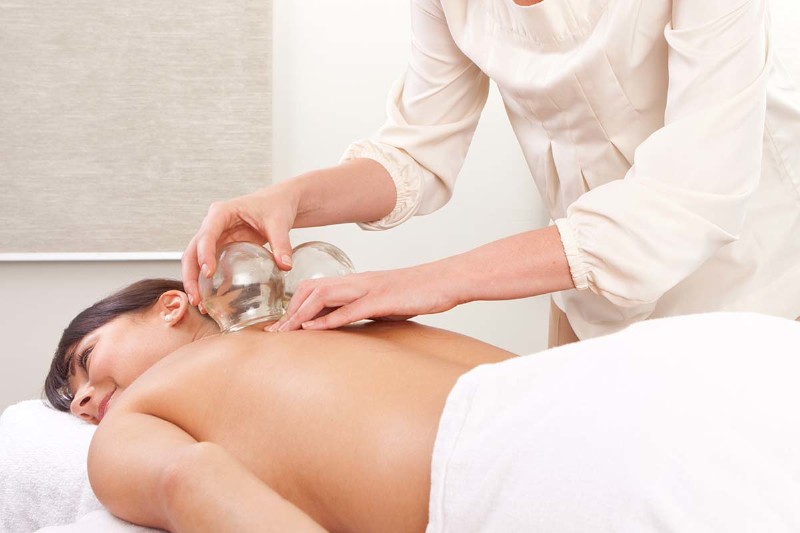
Cupping is similar to a deep tissue massage. A cupping practitioner puts heat in a cup before applying the cup to the patient’s back. The heat in the cup acts as a vacuum and pulls the skin upwards into the cup. This causes fresh blood to be released to the area which can help get rid of toxins, apply acupoint stimulation, improve the circulation of the blood and lymph, relax tight muscles, and reduce inflammation.
Noticeable bruise marks show on the skin following cupping therapy. Although the bruise marks are not attractive, they are not painful and will disappear within a week.
Cupping is typically used for various types of pains, including lower back and leg pain, shoulder and neck tension, and to treat symptoms of fibromyalgia. Cupping can also help to open up the chest, which results in benefits to the lungs that can relieve respiratory issues such as asthma, a cough, and bronchitis. Cupping has even shown to relieve menstrual pains and digestive problems such as stomach aches, diarrhea, and vomiting.
Phototherapy Patches
Phototherapy patches work similarly to acupuncture for pain relief. Although phototherapy is not as well known as other methods, it is very effective. According to the U.S. National Library of Medicine, studies have documented that phototherapy is almost as effective as acupuncture, both in pain relief and stress relief.
Because phototherapy is drug-free and it uses infra-red light to open up energy blockages, it is a safer alternative to drugs such as ibuprofen or acetaminophen, both of which come along with side effects.
G-Jo
G-Jo translates to “first aid” in Chinese, and originated in Eastern medicine thousands of years ago. According to Mother Earth News, rather than using needles, G-Jo is a form of finger pressure, also known as acupressure.
There are two important rules of G-Jo. The first rule is to locate the correct pressure point. This may be tricky at first. Once found, use the tip of your finger to press down on the point as hard as you can for 10 to 15 seconds. You will know when you have located a pressure point because there will be a sharp sensation similar to a pinched nerve.
The second rule is to properly stimulate the pressure point. It is important to apply deep pressure. Massage the spot on the skin with a digging motion. In cases that are severe, you may need to apply the pressure for several minutes.
Pressure points are typically mirrored on one side of the body as they are on the other. This means that after you stimulate a spot on the left side of the body, you can repeat the stimulation on the right side.
G-Jo is the most basic form of acupuncture without needles and it is designed to be used as needed. You only need to perform G-Jo when symptoms appear, either from an illness or as a result of an injury.
Auricular Acupuncture
Performed on the ears, this is most often used for treating addictions and weight loss. Acupoints on the ear are stimulated with tiny seeds that do not pierce the skin and are painless when applied. The patient leaves the seeds on their ears for up to a week and stimulates the points on their own by massaging the points several times throughout the day.
With over 200 acupoints on each ear representing different parts and functions of the body, a trained practitioner can use this to treat many ailments, as well as use them in diagnosing the patient. When these points in the ear are stimulated, the central nervous system is accessed through the cranial nerves, sending a direct message to the brain resulting in a healing response.
Moxibustion
This form of therapy evolved centuries ago in China. Moxibustion is the practice of burning moxa, which is an herbal wool, over specific acupoints. The burned moxa is simply placed on the tip of a needle and waved over the skin in sliding motions.
The radiant heat that is produced by moxibustion restores balance, promotes circulation, and reduces pain by penetrating deeply into the body. Moxibustion is used to improve general health and to treat chronic conditions such as pain, arthritis, infertility, digestive disorders, and ulcers, to name a few.
Acupuncture – A Holistic Approach
As you can see, acupuncture is more than poking people with needles. It is an integrated, holistic system of diagnosing and treating the body.
And acupuncture itself is part of a larger system of Chinese Medicine.
For example, I will often use acupuncture in conjunction with bodywork, Chinese herbs, even cold laser therapy.
It’s not a single treatment for a single condition. It is a full approach to maximal health throughout the body.
If you’re in Seattle, give me a call! If you’re elsewhere, seek out your local practitioner. Here’s a handy guide to finding a good acupuncturist »
What is Acupuncture and How Does it Work?
Everything You Need to Know About this Ancient and Modern Practice
12 Ways to Get the Most Out of Your Acupuncture Treatments
Take Advantage of the Full Potential of Working with an Acupuncturist
How to Choose the Best Acupuncturist, and the Right One for You
The Things to Look For and Watch Out For When Finding an Acupuncturist
What to Expect During Your Acupuncture Treatment
Everything You Should Know for Before, During, and After Your Treatment
What is Qi?
Flow and Traffic Jams on the Body’s Energy Superhighway
5 Science-Backed Ways Acupuncture Improves Your Life
Better Sleep, Less Anxiety, More Energy - How to Live Better through Acupuncture
What are Acupuncture Points?
The Foundation of Acupuncture and the Triggers for Healing
The 12 Meridians of Acupuncture
What They Do and What They Mean for Your Health

